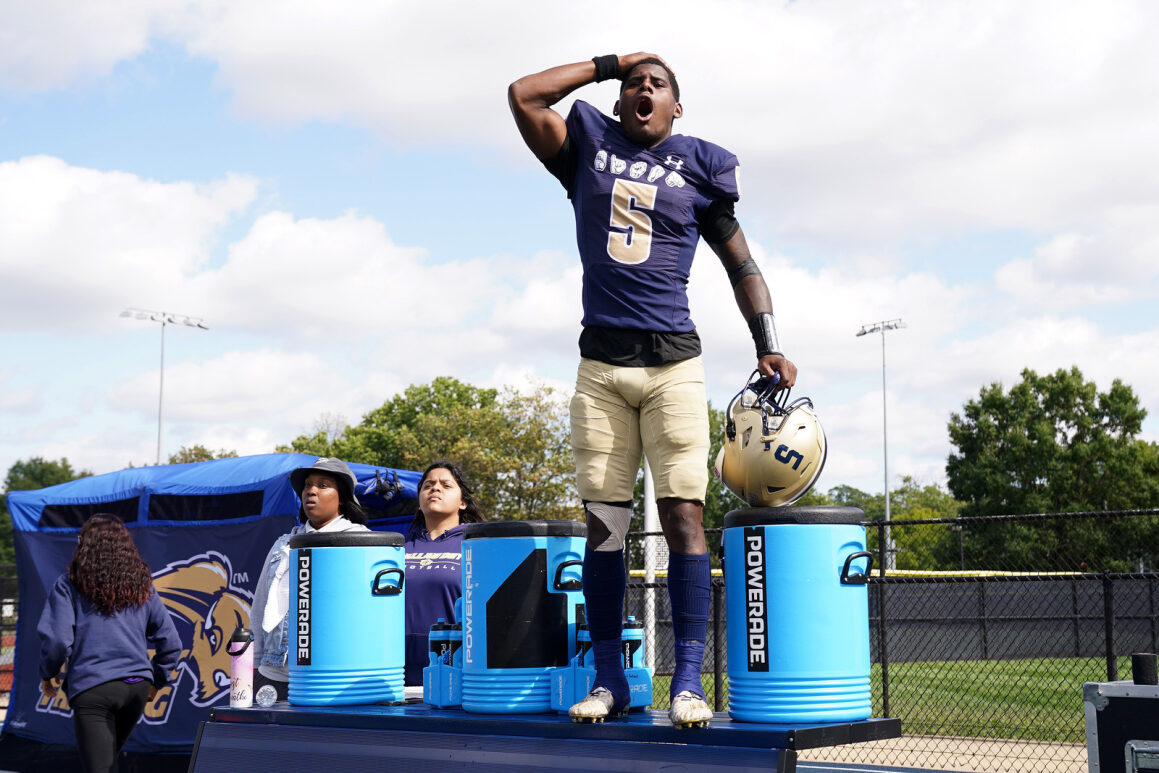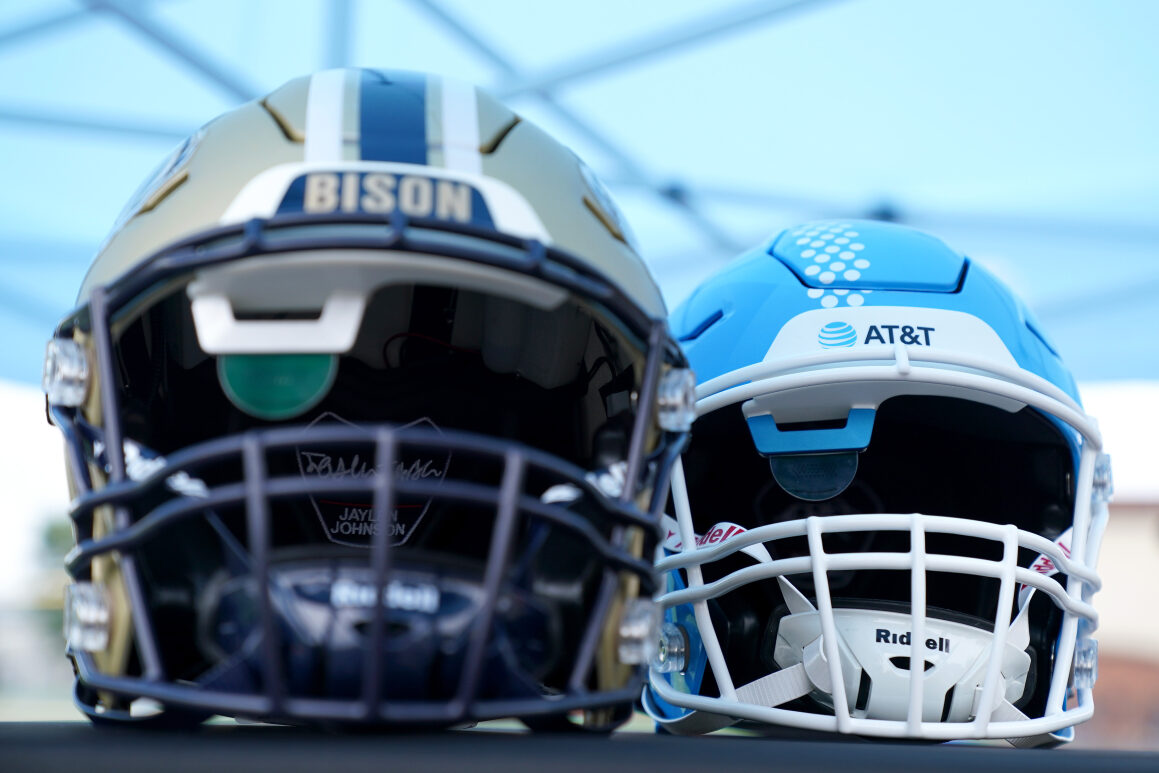In the 2023 season, the sport is more refined, with technology built into the equipment. And with technology, there’s always room to grow. On Oct. 7, the university for deaf and hard-of-hearing students debuted a helmet that uses augmented reality to communicate with players. At a home game against Hilbert College, Gallaudet’s quarterback, Brandon Washington, donned the helmet in an NCAA-approved trial to test how it would hold up in a game setting.
Goldstein said players, coaches and AT&T, which created the helmet, collaborated for two years to build the tool.
“From the first time I jumped on a call with them, [I thought], ‘They’re not football people, they’re tech people,’” Goldstein told Technical.ly. “They were like, ‘We’re just trying to connect this piece from what we’re doing to what you want as a coach to what the player needs to see.’”

Typical football helmets have a sound system to hear coaches calling plays, but that doesn’t work for Gallaudet’s players who are deaf or hard of hearing. As a result, Goldstein said that sometimes he can’t get players’ attention, and thus is unable to communicate with them.
But in March of 2021, communication giant AT&T came to the school with a solution. From there, coaches, players and the AT&T team met regularly to develop the best tool for in-game use.
Enter the new helmet: Coaches choose a play via a connected tablet, and players can see an AR version on a lens built into the helmet.
Andrew Bennett, assistant VP of mass market 5G products at AT&T, said that he first got the idea after learning that even at the highest level, in-helmet radios are one of few forms of communications, especially for quarterbacks.

“This form of communication can’t be utilized by deaf and hard-of-hearing athletes, creating a communications gap,” Bennett said in an email. “We saw an opportunity to create an alternative way for these athletes to communicate, and Gallaudet’s ongoing collaboration was essential in being able to turn this idea into reality.”
Goldstein joined weekly meetings with AT&T, and said the most important part of the design, for him, was the ability to capture the attention of the quarterback. Ultimately, the school and AT&T built the program from scratch to meet the needs of the coaches and players. In its current form, players wearing the helmet can view formations for a run or a pass, while coaches can access a button for the play number and a third line with an option for tags.
In the final model, the helmet features a 5G module connected to antennas, just like a cell phone. Once the play is entered into the tablet, it appears on the player’s screen through the 5G network, which helps keep up with the pace of the game.
Several prototypes with different technical iterations and designs were built over the past few years, and players first got to test one last fall. Early on, Bennett said, the 5G module, battery and processor were all located on the outside of the helmet, so it effectively looked like a mohawk on top of the head. Original designs also weren’t custom-fit to the player’s head, so they had to move the helmet up and down to see the screen.
“It allowed us to move things around freely until we had a more functional design that could be small and lightweight enough to ultimately fit inside of the helmet and also pass rigorous safety testing,” Bennett said of the prototype process.
In the final model, the helmet features a 5G module connected to antennas, just like a cell phone. Once the play is entered into the tablet, it appears on the player’s screen through the 5G network, which helps keep up with the pace of the game.
In its custom trial, Goldstein said the helmet worked great, and solved a lot of the communication issues he struggles with in games.
“I wish we had it every game,” the coach said. “It’s a whole lot easier getting access to my quarterback when I need it.”

For Goldstein, adding the helmet permanently would be a game-changer for the team and players all around. Many of the Gallaudet players, he said, have played on hearing football teams in middle school and high school and had trouble communicating. Some can’t play certain positions, like offense, because the quarterback and coaches can’t communicate with them.
In the 14 years he’s worked with this team, Goldstein said he’s had two NFL prospects. He thinks this technology would give students a better chance of actually making the professional roster.
Even beyond deaf and hard-of-hearing players, he sees a use value: Professional football stadiums are loud, and sometimes quarterbacks can’t hear over crowd noises. A visual aid would solve that.
And for the school that claims to have invented the huddle in 1894, changing the future of football is certainly not out of the question.
“Football’s changed and the world of technology has changed,” Goldstein said. “It’s not just: ‘OK, we’re going to play football. Let’s just put on our equipment and smash each other now.’ Those days are all gone. This is a game of technology.”







